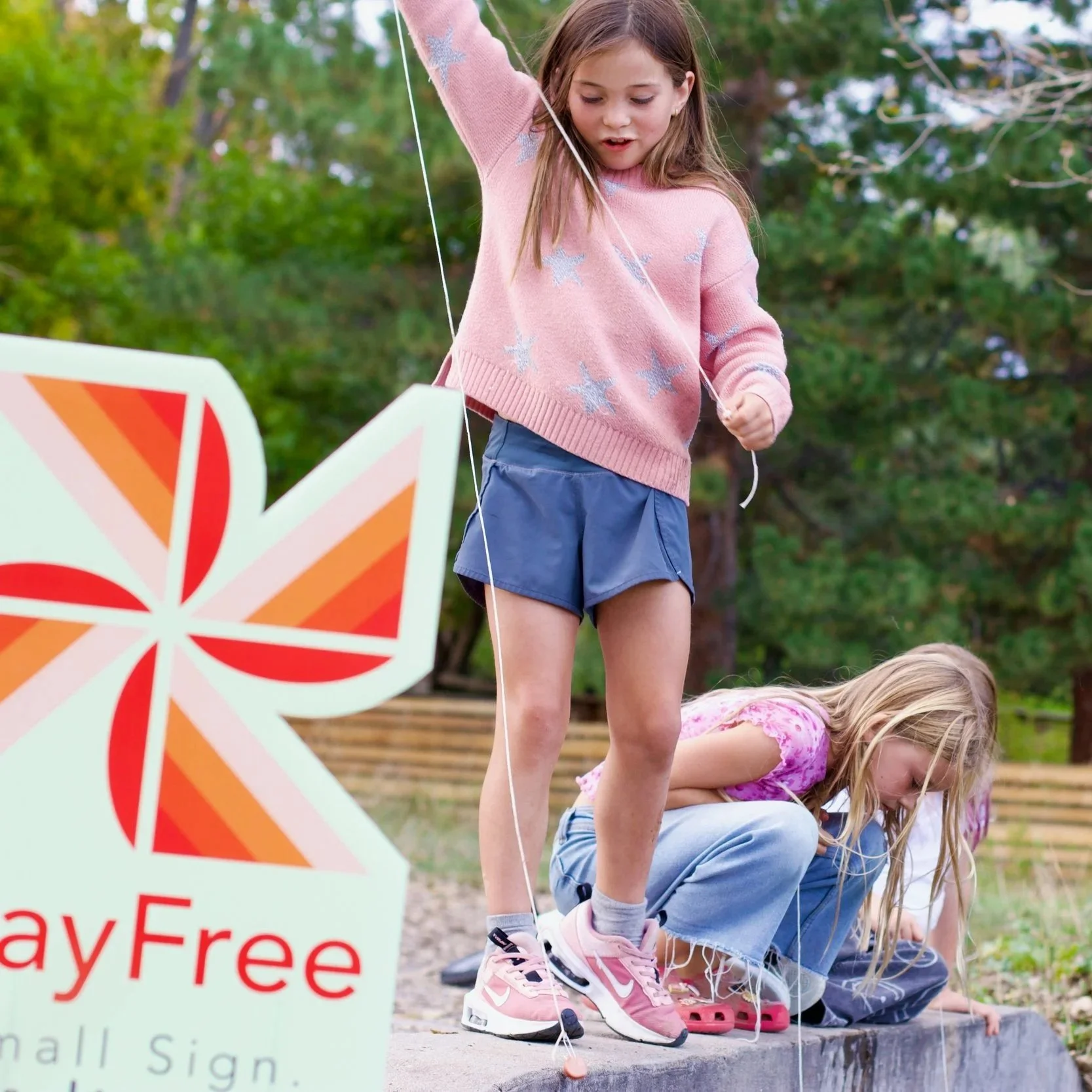
Tech Tip of the Month:
Home-Based Dumb Phones
A phone that stays home gives kids connection when it matters—without pulling them into the always-on cycle.
The Real-Life Question / Situation
“My middle schooler doesn’t have a phone yet, but I’m starting to feel bad. What if she’s the only one who can’t text her friends after school?”
Many parents delay smartphones as long as they can, wanting to protect their kids from the stress and distraction that come with them. But eventually, the worry creeps in—will my child feel left out? Ironically, research shows that more phone time often leads to more loneliness, not less.
The PlayFree Perspective
You’re not alone in this. Most parents today are trying to walk a tricky line: keeping their kids connected while protecting their wellbeing. At PlayFree, we believe the goal isn’t to cut kids off from connection—it’s to help them find the right kind of connection at the right time.
Studies consistently show that the more time adolescents spend on smartphones, the higher their rates of anxiety, distraction, and social comparison. What begins as an act of love—wanting your child to belong—can accidentally pull them into the very isolation you hoped to prevent.
A simple middle ground is the home-based dumb phone. Whether it’s an old-school landline or a WiFi-based option like TinCan, it gives kids the ability to call friends, make plans, and reach parents—without the social media pressure, late-night texting, or endless scrolling.
A home phone also helps kids build real-world skills: leaving voicemails, talking respectfully on the phone, managing contacts. It’s connection that supports development instead of speeding it up.
Try This at Home
Try This Tonight: Talk with your child about why connection matters and what kind of communication feels healthy.
Conversation Starter: “What do you think makes someone ready for their own phone?”
Practice for the Week: Look into options for a home-based phone—try an old landline, or explore a WiFi-based alternative like TinCan.
Neighborhood Connection Idea: Share the idea with another family. When kids can reach each other through home phones, it makes independent play easier and safer.
The Bigger Picture
Every time a family sets a healthy boundary, it gives others the courage to do the same. When one home adds a phone that stays put, it reminds the whole neighborhood that there are creative, connection-first alternatives to early smartphone use.
This is what PlayFree is all about—helping families build confidence, connection, and community, one small decision at a time.
PlayFree provides all information rooted in science. Here are the citations for the blogpost above.
Twenge, J. M., & Campbell, W. K. (2018). Associations between screen time and lower psychological well-being among children and adolescents. Preventive Medicine Reports, 12, 271–283. https://doi.org/10.1016/j.pmedr.2018.10.003
→ More screen time is linked to higher anxiety and lower happiness in youth.
Primack, B. A., Shensa, A., Sidani, J. E., Whaite, E. O., Lin, L., Rosen, D., ... & Miller, E. (2017). Social media use and perceived social isolation among young adults in the U.S. American Journal of Preventive Medicine, 53(1), 1–8. https://doi.org/10.1016/j.amepre.2017.01.010
→ High social media use associated with greater loneliness.
Wilmer, H. H., Sherman, L. E., & Chein, J. M. (2017). Smartphones and cognition: A review on the effects of mobile technology habits on attention, memory, and learning. Frontiers in Psychology, 8, 605. https://doi.org/10.3389/fpsyg.2017.00605
→ Frequent phone use linked with attention fragmentation and cognitive overload.
Boer, M., van den Eijnden, R. J. J. M., & Stevens, G. W. J. M. (2020). Adolescents’ problematic social media use and mental well-being: A cross-national study. Journal of Adolescence, 88, 67–77. https://doi.org/10.1016/j.adolescence.2020.01.009
→ Problematic social media use predicts emotional problems and lower wellbeing.
Uhls, Y. T., Ellison, N. B., & Subrahmanyam, K. (2017). Benefits and costs of social media in adolescence. Pediatrics, 140(S2), S67–S70. https://doi.org/10.1542/peds.2016-1758E
→ Early digital exposure can interfere with empathy and in-person communication skills.
Odgers, C. L., & Jensen, M. R. (2020). Adolescent mental health in the digital age: Facts, fears, and future directions. Journal of Child Psychology and Psychiatry, 61(3), 336–348. https://doi.org/10.1111/jcpp.13190
→ Emphasizes the value of shared family and community boundaries for healthy tech use.

